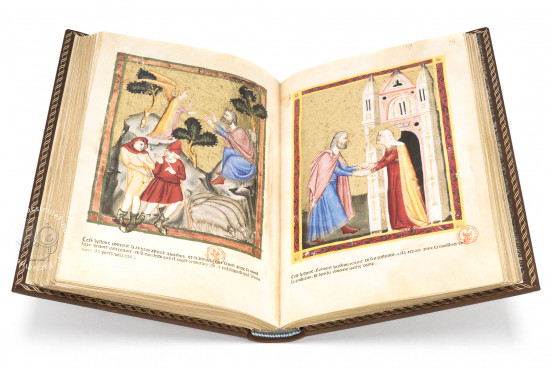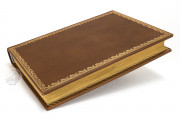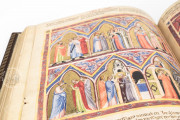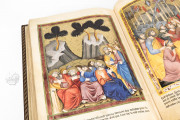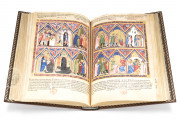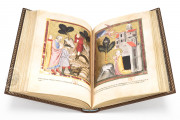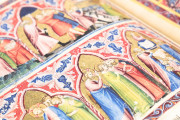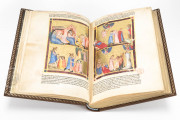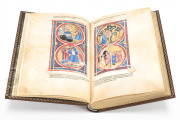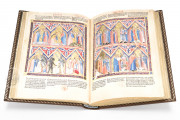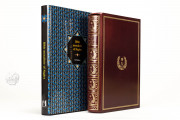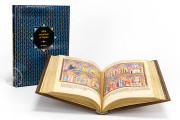The Bible moralisée of Naples is one of the most lavish gothic manuscripts from southern Italy. The codex, also known as Biblia de Napoles, was written and illuminated in the second quarter of the fourteenth century in Naples and features over 200 beautifully illuminated full-page miniatures of exceptional quality.
The Bible Moralisée of Naples: A Luxury Item
The Bible of Naples was created on the basis of the one-volume French Bible Moralisée made in Paris around 1240 which had belonged to Charles of Anjou, the younger brother of St Louis, whose bible – commissioned by their mother Blanche of Castile – is also renowned.
The Bible Moralisée of Naples, containing part of the Old Testament (fols. 1-112v.) and the New Testament (fols. 113r-189v), is to be considered a luxury item due to its length (almost 400 pages long) mainly caused by the choice of painting only on the flesh side of each folium.
Contrasting Artistic Techniques of Italian Painting
The codex – exhibiting an iconographic apparatus that very much showcases the Italian painting style – with its seventy-six full-page illuminations depicting the life of Christ is an example of an extraordinary pictorial quality and mastery of the art of illumination.
The Bible of Naples presents two contrasting illustration techniques making this Bible one of a kind. One technique regards the first 128 illuminations of the Old Testament, framed by plant decorations, and divided into two parallel sequences, with the upper one featuring biblical scenes and the lower part presenting their moralizations.
The second technique appears in the New Testament section with seventy-six full-page illuminations, painted on gold-leaf ground, echoing the Giottesque style, much in keeping with the style of frescoes painting flourishing at the time in Italy.
A Resumed Project
The two techniques of illustration are the work of two artists, so it is conceivable that the iconographic project was suddenly interrupted and then, once resumed, was changed – not taking into account the initial one.
It has been suggested that the artist of the second section of the manuscript be identified with a Neapolitan student of Giotto who was also the author of a cycle of Our Lady's life made around 1335 in the Barrile chapel of San Lorenzo, the sanctuary of a friend and adviser of king Robert.
A Culture of Self Promotion
Under the reign of the ruler Robert, a cultural patronage was developed so much so that he himself was considered a bibliophile, who had scribes from different regions transcribe other books at his court.
Despite the miniaturists are almost all anonymous, it is certain that most of those from the early fourteenth century were influenced both by the Roman painter Cavallini and by Giotto.
This manuscript is one of the rarest examples of truly Neapolitan painting, a paradoxical synthesis of the finest artistic trends from the time before the homogenisation of international Gothic.
A Powerful Commissioner and a Bibliophile
The work commissioned by Robert of Naples, the Wise, completed in the early 1350s is the only known Italian copy of a bible moralisée and it was probably part of the culture of self promotion of the family, that could boast two saints among its members.
Binding description
The manuscript unfortunately lost its original binding and a 19th century one was provided, made with brown calf-skin boards, spine in red tinted leather with the monogram of Napoleon I stamped in gold.
We have 1 facsimile edition of the manuscript "Bible Moralisée of Naples": Biblia de Nápoles facsimile edition, published by M. Moleiro Editor, 2009-2011
Request Info / Price
